Quick Facts Crickets

Corky’s Cricket Control Service
In North America, there are two primary types of crickets you may encounter either around your property or sneaking into your home. The first is Acheta domesticus, commonly known as the house cricket. They are about an inch in length and have a light yellowish-brown body with three distinct dark bands on its head, bent back legs, antennae, and long, pointed wings. The house cricket will eat almost anything and can often be found chewing on fabrics, paper, rubber, and foods. They are attracted to warm, moist environments and enter homes through various cracks or openings in window and door frames, as well as masonry.
The second type of cricket is the field cricket, known as Gryllus. It differs slightly in appearance compared to the house cricket, with darker coloring (often appearing black) and a smaller body. They can be found in your yard among tall grasses, shrubbery, or piles of wood, and are often seen leaping away when startled (similar to their cousin, the grasshopper).
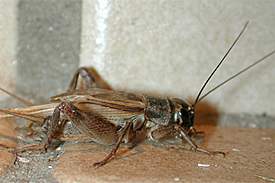
House Cricket

Field Cricket
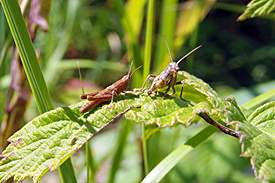
Grasshopper vs Cricket
Outside, house crickets feed on plants and dead or live insects, including other crickets. Indoors, they can feast on fabric, including clothing and carpet. Wool, cotton, silk and synthetic fabrics as well as clothes soiled with perspiration are especially yummy to house crickets. Field crickets eat a wide range of food, including seeds, plants and insects (including other crickets). They range primarily outdoors and only occasionally find themselves wandering indoors, where their food supply is minimal, and their life expectancy is short.
Crickets in general do not pose a health risk to humans or our pets, but can cause damage to property, mainly clothing, carpets and other fabric covered items. Both house and field crickets have distinct odors when their numbers are large. In fact, they stink. The fetid smell is not really the cricket itself, but the dead carcasses and excrement that build up and rots as populations increase.
High heat during summer results in increased activity in the insects. The level of activity directly affects the life span of these animals. The greater the movement, the more energy they utilize, and the faster they die.
High heat, during summer months increases cricket activity and increased activity directly effects their life span. The more activity the more energy expended, the faster they die. Heat also directly affects cricket growth. When exposed to high temperatures, crickets can reach their full growth potential within 4 to 5 weeks. At this growth rate, they can die in 6 to 7 weeks. Their death once again leaves behind dead bodies that, combined with the heat and humidity, rot and really stink. The odor is likened to rotting meat.
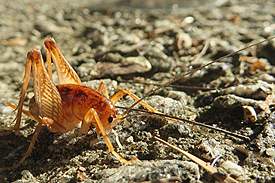
Camel Cricket
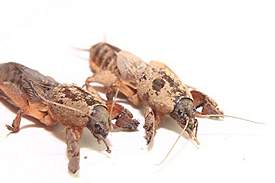
Mole Cricket
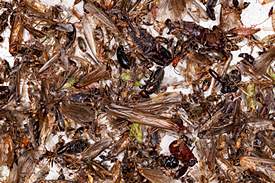
Dead Crickets
Besides the House cricket, the Camel cricket will also make its’ home inside houses. It doesn’t have wings and it doesn’t chirp but it can still cause the same type of damage. Outside, besides the field cricket, is the Mole cricket. Their major differences are that the Mole cricket has a head like a lobster and is built to burrow into soil with its’ clawed front appendages. It is a sub-surface menace that damages turf grass as it tunnels underneath and feeds on roots and delicate shoots.
Crickets are nuisance pests. To keep them away from your yard and out of your house, Corky’s Pest Control has developed a Cricket Control Service, that really works. The initial service is -structured to eliminate a cricket infestation. Since crickets migrate from neighboring properties a control and preventative maintenance plan is essential. So, once an initial cricket control service has been performed, cricket prevention can be included as part of Corky’s Ultimate Pest Control Service program. This ultimate control service for Ants and Spiders includes preventative treatments for ticks, aphids, whitefly, mosquitoes and more!
Call Corky’s and get rid of crickets fast. 1-800-901-1102 or go online and ask questions or order service today.
Question? When is a cricket not a cricket? When it’s a Jerusalem Cricket!
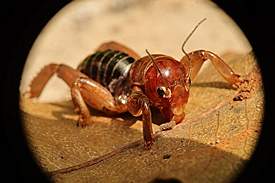
 800-901-1102
800-901-1102